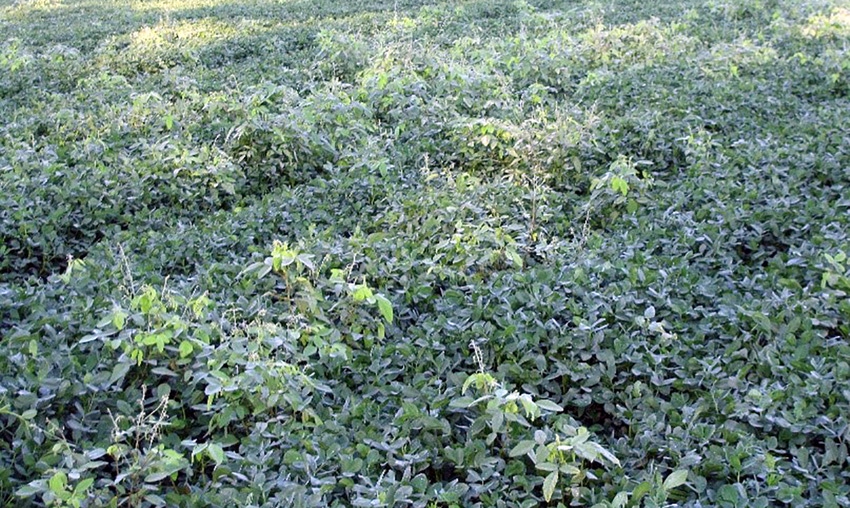September 1, 2020

When growers spend money on herbicides, they are expecting them to work. With a little bit of help from Mother Nature and/or a center-pivot, herbicides will work as designed when applied at the correct rate and time. However, residual herbicides in row crops do not last forever and peanuts have a long growing season.
Recently while discussing late-season weed escapes with a few peanut growers and county extension agents, I was thinking of some memorable phrases that might help me explain some of what is going on. The best that I can come up with include a book titled 'Only Earth and Sky Last Forever,' written by Nathaniel Benchley, and the country song 'Timing is Everything,' sang by Garret Hedlund. Thanks to an inspirational 6th grade teacher, I have always been an avid reader. In another life, perhaps I would have been a musician. But I digress!
All pesticides, including herbicides, are subject to breakdown in the environment. How fast that breakdown occurs is often referred to as half-life, or the amount of time it takes for a pesticide to be reduced by half. Many factors effect herbicide half-life including soil type, temperature, moisture, light, pH, and soil microbes.
Check out the average half-life of some common herbicides used for residual weed control in peanut (Table 1). Notice not one of these herbicides lasts full-strength for 140+ days, about the life of an annual peanut crop. Thus, it is almost impossible for an herbicide like Valor, applied in late April or early May, to last all the way until peanut harvest in certain fields. At some point, the Valor would be at a level that would not be high enough to provide adequate residual control of Florida beggarweed, especially when wet weather persists.

If what I said in the last paragraph is true, then why are late-season weeds worse in some years and not others? Great question with a complicated answer. All peanut fields in Georgia are unique. They have different ecological histories, tillage practices, crop rotations, herbicide uses, soil types, etc. etc. etc. All crop production years have very different environmental conditions. Collectively, these influence the weed-seed bank and when/if what weeds will emerge.
On another note, if I had a nickel for every complaint heard this year about annual grass control in peanuts, I would be as wealthy as a university peanut agronomist! Cannot help to think that timing is everything in many cases.
Peanut fields are often treated with a POST application of a grass herbicide (Select, Fusilade, etc.) when the weeds are taller than the peanuts. In this scenario, only ~20% of the weed is covered by the herbicide. Frankly, that is not enough coverage! A study conducted a few years ago reported that goosegrass control with Select (clethodim) was 23% less when applied at the 4-6 tiller stage in comparison to applications made at either the 2-4 leaf stage or 1-2 tiller stage. If you used your “dicamba” nozzle in this scenario, you might also see an additional 5%-10% reduction in grass control.
The good news about weeds that emerge late-season in peanut fields is that they are unlikely to have caused any direct yield losses due to competition for moisture, nutrients and sunlight. Results of historical peanut-weed competition studies have shown that weeds emerging in fields that were maintained weed-free for the first 4 to 6 weeks after peanut emergence will not reduce yield. However, late-season weeds could indirectly influence yield if they are tall and dense enough to impede fungicide/insecticide deposition and/or peanut digging.
The presence of late-season weeds in peanut fields can often be very frustrating, especially if everything looked good earlier in the season. But remember, only earth and sky last forever, not herbicides, timing is everything and smaller is better. If these do not help explain some of your current weed woes, you might just have to chalk it up to Mother Nature flexing her muscles.
As always, good weed hunting!
About the Author(s)
You May Also Like






